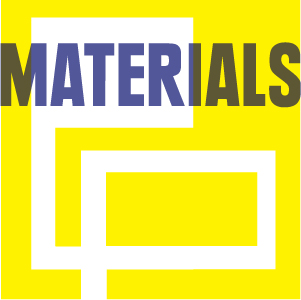
Architectural Record: Looking at materials, what is the biggest challenge for architects in the next decade?
In the United States we have forgotten how to make things. I’m working on a project now where stone is quarried in the Northeast and i s being outsourced to India for fabrication. I n architecture schools, there is great interest in materials, but many programs still don’t have the facilities or the pedagogy to really get traction on teaching an embodied-material savoir-faire architecture. A key challenge is bridging the gap between the now- robust world of 3D modeling and the world of prototyping and digital fabrication.
Are you working with any exciting new materials in your MATx studio at the moment?
We are involved in a project that's not out yet, but the broad parameters have to do with thinking about wood and phase-changing materials [which store and release thermal energy in the process of changing from one phase to another, such as from a solid to a liquid].
What kind of manufacturers do you feel will be leading the way in material research in the next decade?
The manufacturers that will be most able to take advantage of innovation with materials will be those that have the ability to vertically integrate either within their own company structures, or by engaging architects and other consultants . I think that a company’s approach to manufacturing is going to be key — those that are able to make changes in the way their materials are extracted and produced or the ways in which their materials are assembled and distributed will be well positioned to succeed.
What would you say to a company that's wondering if it's worth investing in a more sustainable product in this economy?
The answer depends on your timeframe. If you look at a mid-range period, let's say the next five years, a company that does not innovate is probably going to do worse than one that engages now and is slightly ahead of the curve.
What do you hope to see in the next decade with photovoltaic material developments?
I think it’s great that we have some relatively high-performing crystalline-silicon-glass-based solar panels, but this poses a material-science dilemma that gets back to the manufacturing problem. Can we afford up-front carbon emissions in order to get clean energy a little bit farther down the line? There are pretty good models that show you need to run a glass-based solar panel for two years before you can get the embodied energy out of it.
Are materials that get a lot of negative attention, like PVC, going to disappear in the next decade?
I think it would be a great if materials like PVC went away, but it’s not helpful to isolate one material. T here are so many materials that we accept and use every day that have serious consequences in the way they' re manufactured. You need to look more broadly at material ecology, from where materials come from in the world, how they are assembled and processed, and what the final outcome is. In reality, manufacturing glass solar panels produces a lot of carbon, but we point the finger at PVC as a problem.

Post a comment to this article
Report Abusive Comment